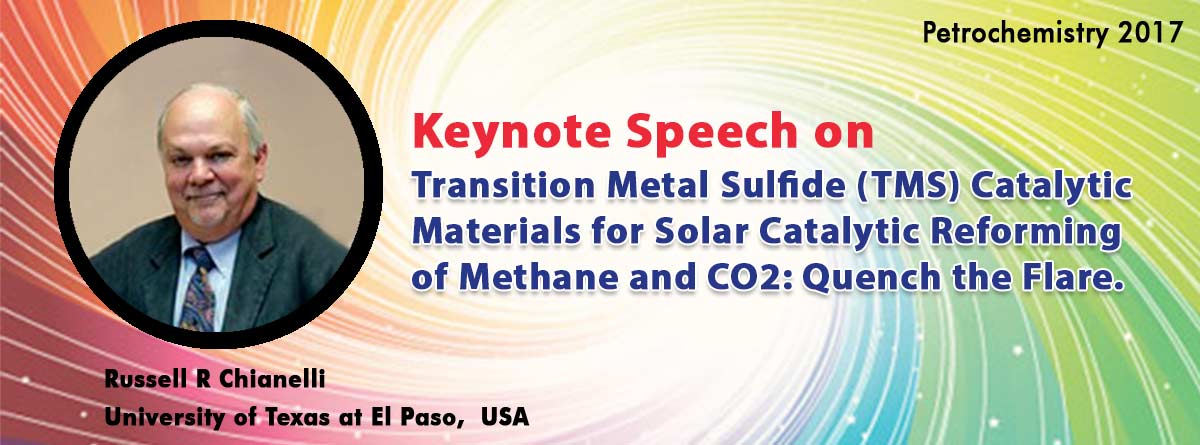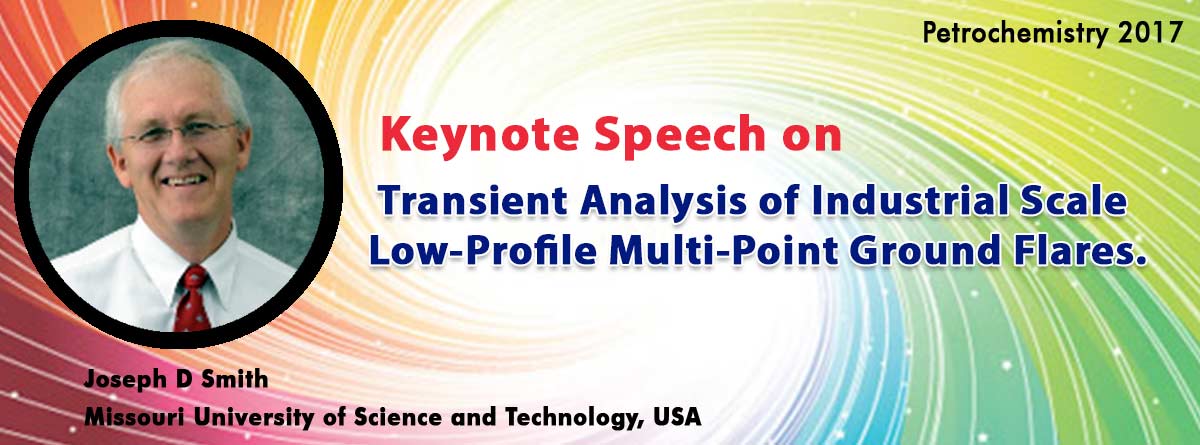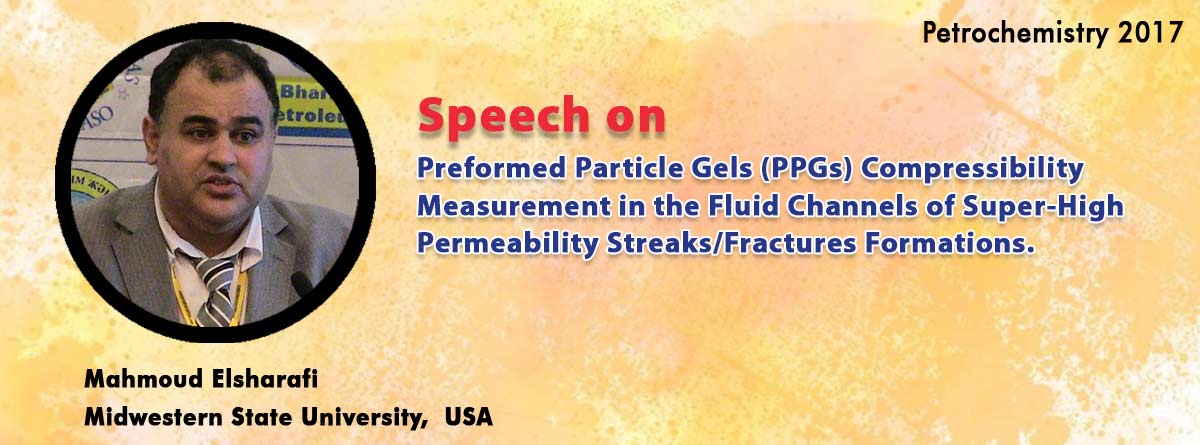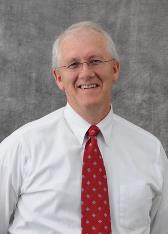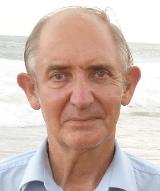Theme: A global hub for exchanging the advanced technologies in Petrochemistry
Petrochemistry 2017
Conference series LLC Ltd Conferences invites all the participants from all over the world to attend '7th World Congress on Petrochemistry and Chemical Engineering' during November 13-14, 2017 in Atlanta, Georgia, USA which includes prompt keynote presentations, Oral talks, Poster presentations and Exhibitions.
Petrochemistry 2017 conference directs towards addressing main issues as well as future strategies of global energy industry. This is going to be the largest and most promising international conference where oil and gas industry professionals as well as decision makers will come to discuss and debate on various aspects of the challenges, risks and investment opportunities throughout the complete integrated energy and utilities supply chain. Petrochemistry International Conference will also provide the proper business opportunities and provide an in opportunity to make new decisions by meeting decision makes in the energy sector. Conference series LLC Ltd organizes a conference series LLC Ltd of 1000+ Global Events inclusive of 300+ Conferences, 500+ Upcoming and Previous Symposiums and Workshops in USA. Europe & Asia with support from 1000 more scientific societies and publishes 700+ Open access journals which contains over 30000 eminent personalities, reputed scientists as editorial board members.
Why to attend???
With members from around the world focused on learning about petrochemistry and its advances; this is the best opportunity to reach the largest assemblage of participants from the petroleum community. Conduct presentations, distribute information, meet with current and potential scientists, make a splash with new researches and its developments, and receive name recognition at this 3-days event at petrochemistry conference. World-renowned speakers, the most recent techniques, developments and the newest updates in petroleum industry are hallmarks of this conference.
Target Audience:
- Petroleum Students, Scientists
- Petroleum, Oil and Gas Researchers
- Petroleum and Chemistry Faculty
- Chemical Colleges
- Petroleum Associations and Societies
- Business Entrepreneurs
- Training Institutes
- Software developing companies
- Manufacturing Companies
- Data Management Companies
- Petroleum engineering companies
- Oil and gas companies
Conference series LLC Ltd Conferences invites all the participants from all over the world to attend '7th World Congress on Petrochemistry and Chemical Engineering' during November 13-14, 2017 in Atlanta, Georgia, USA which includes prompt keynote presentations, Oral talks, Poster presentations and Exhibitions with theme: A global hub for exchanging the advanced technologies in Petrochemistry.
Conference series LLC Ltd organizes a conferences of 1000+ Global Events inclusive of 300+ Conferences, 500+ Upcoming and Previous Symposiums and Workshops in USA. Europe & Asia with support from 1000 more scientific societies and publishes 700+ Open access journals which contains over 30000 eminent personalities, reputed scientists as editorial board members.
Track 1: Petroleum Exploration & Field Management
Petroleum Exploration is the process of exploring for oil and gas resources in the earth’s sedimentary basins. The process relies on the methodical application of technology by creative geoscientists that leads to viable prospects to drill and the actual drilling of these prospects with exploratory and appraisal wells. Geological prospecting and exploration for oil and gas is a set of industrial and R&D activities for geological study of subsurface resources, identification of promising areas, discovery of fields, their evaluation and pre-development. The final objective of geological prospecting is preparation of subsurface resources. The main principle of geological prospecting is the comprehensive geological study of subsurface resources when along with oil and gas exploration all associated components (petroleum gas and its composition, sulphur, rare metals, etc.), possibility and practicality of their production or utilization are investigated; hydrogeological, coal mining, engineering, geological and other studies are performed; natural, climatic, socioeconomic, geological engineering and economic indicator and their changes caused by future field development are analysed.
The global petroleum resin market is estimated to reach USD 2.58 Billion by 2021, at a CAGR of 7.7%. The market is segmented by application, such as adhesives & sealants, printing inks, paints & coatings, rubber compounding, tapes & labels, and others applications; by type that includes C5 petroleum resins, C9 petroleum resins, hydrogenated hydrocarbon resins, and C5/C9 petroleum resins; by end-use industry such as building & construction, tire industry, personal hygiene, consumer goods, automotive, and others; by region, namely, North America, Middle East & Africa, Latin America, Asia-Pacific, and Europe. The base year considered for the study is 2015, while the forecast period is between 2016 and 2021.
Petrochemistry Conference USA| Chemical Engineering Conferences USA | Petroleum Conferences USA:
6th International Petroleum Engineering Conference, June 29-30, 2017 Madrid, Spain; 2nd International Petroleum Conference, June 1-3, 2017 Osaka, Japan; 3rd International oil and gas expo, July 13-14, 2017 Berlin, Germany; International Oil, Gas and Petrochemistry Conference, April 03-05, 2017 DUBAI, UAE; 4th Annual Biofuels Congress, April 27-28, 2017 Dubai, UAE; 2nd International Biochemical Engineering Conference, June 7-8, 2017 Milan, Italy; 5th World Bioenergy Congress, June 29-30, 2017 Madrid, Spain; 5th International Bioplastics Conference, July 20-21, 2017 Munich, Germany; 7th International Biofuels & Bioenergy Conference, October 2-4, 2017 Toronto, Canada; 2nd World Biodiesel Congress, December 4-5, 2017 Atlanta, USA; 6th World Biopolymers Congress, September 7-9, 2017 Paris, France; 3rd International Chemical Engineering Conference, October 2-4, 2017 Chicago, USA; 7th International Biopolymers-Bioplastics Conference, October 19-21, 2017 San Francisco, USA; 4th International Petrochemical Engineering Conference, January 21-23, 2017 Bangkok, Thailand; Energy, Power and Petrochemical Engineering Conference, April 26-28, 2017, Beirut, Lebanon; American Association of Petroleum Geologists; The European Petrochemical Association; Society of Petroleum Engineers;
Track 2: Chemical Applications in Producing Oil and Gas
Petroleum Chemistry is made of a mixture of different hydrocarbons. The most prolific hydrocarbons found in the chemistry of petroleum are alkanes, these are also sometimes knows as branched or linear hydrocarbons. A significant percentage of the remaining chemical compound is the made up of aromatic hydrocarbons and cycloalkanes. Additionally petroleum chemistry contains several more complex hydrocarbons such as asphaltenes. Each geographical location and hence oil field will produce a raw petroleum with a different combination of molecules depending upon the overall percentage of each hydrocarbon it contains, this directly affects the colouration and viscosity of the petroleum chemistry. The primary form of hydrocarbons in the chemistry of petroleum are the alkanes, which are also often named paraffins. These are termed saturated hydrocarbons and the exhibit either branched or straight molecule chains.
The market size of composites in oil & gas industry is projected to reach USD 1.98 Billion by 2021, at a CAGR of 5.05% between 2016 and 2021. The increasing demand for non-corrosive and lightweight materials in the oil & gas industry and low maintenance cost of composites are the key drivers of the global market of composites in oil & gas industry.
Petrochemistry Conference USA| Chemical Engineering Conferences USA | Petroleum Conferences USA:
5th International Bioplastics Conference, July 20-21, 2017 Munich, Germany; 7th International Biofuels & Bioenergy Conference, October 2-4, 2017 Toronto, Canada; 2nd World Biodiesel Congress, December 4-5, 2017 Atlanta, USA; 6th World Biopolymers Congress, September 7-9, 2017 Paris, France; 3rd International Chemical Engineering Conference, October 2-4, 2017 Chicago, USA; 7th International Biopolymers-Bioplastics Conference, October 19-21, 2017 San Francisco, USA; 6th International Petroleum Engineering Conference, June 29-30, 2017 Madrid, Spain; 2nd International Petroleum Conference, June 1-3, 2017 Osaka, Japan;3rd International oil and gas expo, July 13-14, 2017 Berlin, Germany; International Oil, Gas and Petrochemistry Conference, April 03-05, 2017 DUBAI, UAE; 4th Annual Biofuels Congress, April 27-28, 2017 Dubai, UAE; 2nd International Biochemical Engineering Conference, June 7-8, 2017 Milan, Italy; 5th World Bioenergy Congress, June 29-30, 2017 Madrid, Spain; 4th International Petrochemical Engineering Conference, January 21-23, 2017 Bangkok, Thailand; Energy, Power and Petrochemical Engineering Conference, April 26-28, 2017, Beirut, Lebanon; American Association of Petroleum Geologists; The European Petrochemical Association; Society of Petroleum Engineers;
Track 3: Production Technology and Separation Techniques
Industrial gases are a group of gases that are specifically manufactured for use in a wide range of industries, which include oil and gas, petrochemistry, chemicals, power, mining, steelmaking, meals, environmental pollution, medicine, pharmaceuticals, biotechnology, food, water, fertilizers, nuclear power, electronics and aerospace. Their production is a part of the wider chemical Industry (where industrial gases are often seen as "speciality chemicals").
The principal gases provided are nitrogen, oxygen, carbon dioxide, argon, hydrogen, helium and acetylene; although a huge variety of natural gases and mixtures are available in gas cylinders. The industry producing these gases is known as the industrial gases industry, which is seen as also encompassing the supply of equipment and technology to produce and use the gases.
Whilst most industrial gas is usually only sold to other industrial enterprises; retail sales of gas cylinders and associated equipment to tradesmen and the general public are available through gas local agents and typically includes products such as balloon helium, dispensing gases for beer kegs, welding gases and welding equipment, LPG and medical oxygen.
Very small scale gas supply is not confined to just the industrial gas companies. A wide variety of hand-carried small gas containers, which may be called cylinders, bottles, cartridges, capsules or canisters are available to supply LPG, butane, propane, carbon dioxide or nitrous oxide. Examples are whippets, powerlets, campingaz and sodastream.
The global analytical standards market is expected to be valued at USD 1.14 Billion in 2015, growing at a CAGR of 6.5% during the forecast period to reach USD 1.56 Billion in 2020. This market is mainly driven by factors such as rising demand for analytical instruments in proteomics & metabolomics and growing importance of analytical tests in drug approval. On the other hand, high cost of analytical instruments & standards is restricting the growth of the global analytical standards market.
Petrochemistry Conference USA| Chemical Engineering Conferences USA | Petroleum Conferences USA:
6th International Petroleum Engineering Conference, June 29-30, 2017 Madrid, Spain; 2nd International Petroleum Conference, June 1-3, 2017 Osaka, Japan;3rd International oil and gas expo, July 13-14, 2017 Berlin, Germany; International Oil, Gas and Petrochemistry Conference, April 03-05, 2017 DUBAI, UAE; 4th Annual Biofuels Congress, April 27-28, 2017 Dubai, UAE; 2nd International Biochemical Engineering Conference, June 7-8, 2017 Milan, Italy; 5th World Bioenergy Congress, June 29-30, 2017 Madrid, Spain; 5th International Bioplastics Conference, July 20-21, 2017 Munich, Germany; 7th International Biofuels & Bioenergy Conference, October 2-4, 2017 Toronto, Canada; 2nd World Biodiesel Congress, December 4-5, 2017 Atlanta, USA; 6th World Biopolymers Congress, September 7-9, 2017 Paris, France; 3rd International Chemical Engineering Conference, October 2-4, 2017 Chicago, USA; 7th International Biopolymers-Bioplastics Conference, October 19-21, 2017 San Francisco, USA; 4th International Petrochemical Engineering Conference, January 21-23, 2017 Bangkok, Thailand; Energy, Power and Petrochemical Engineering Conference, April 26-28, 2017, Beirut, Lebanon; American Association of Petroleum Geologists; The European Petrochemical Association; Society of Petroleum Engineers;
Track 4: Chemical Reaction Engineering and its Applications
Chemical reaction engineering is a specialty in chemical engineering or industrial chemistry dealing with chemical reactors. Frequently the term relates specifically to catalytic reaction systems where either a homogeneous or heterogeneous catalyst is present in the reactor. Sometimes a reactor per se is not present by itself, but rather is integrated into a process, for example in reactive separations vessels, retorts, certain fuel cells, and photocatalytic surfaces.
The market for industrial labels is estimated to grow from USD 43.04 Billion in 2016 to reach USD 55.95 Billion by 2021, at a CAGR of 5.39%. The base year considered for the study is 2015 and the market size is projected from 2016 to 2021. The segments considered for this report are based on type, material, end-use industry, mechanism, printing technology, identification technology, and region.
Petrochemistry Conference USA| Chemical Engineering Conferences USA | Petroleum Conferences USA:
5th International Bioplastics Conference, July 20-21, 2017 Munich, Germany; 7th International Biofuels & Bioenergy Conference, October 2-4, 2017 Toronto, Canada; 2nd World Biodiesel Congress, December 4-5, 2017 Atlanta, USA; 6th World Biopolymers Congress, September 7-9, 2017 Paris, France; 3rd International Chemical Engineering Conference, October 2-4, 2017 Chicago, USA; 7th International Biopolymers-Bioplastics Conference, October 19-21, 2017 San Francisco, USA; 6th International Petroleum Engineering Conference, June 29-30, 2017 Madrid, Spain; 2nd International Petroleum Conference, June 1-3, 2017 Osaka, Japan;3rd International oil and gas expo, July 13-14, 2017 Berlin, Germany; International Oil, Gas and Petrochemistry Conference, April 03-05, 2017 DUBAI, UAE; 4th Annual Biofuels Congress, April 27-28, 2017 Dubai, UAE; 2nd International Biochemical Engineering Conference, June 7-8, 2017 Milan, Italy; 5th World Bioenergy Congress, June 29-30, 2017 Madrid, Spain; 4th International Petrochemical Engineering Conference, January 21-23, 2017 Bangkok, Thailand; Energy, Power and Petrochemical Engineering Conference, April 26-28, 2017, Beirut, Lebanon; American Association of Petroleum Geologists; The European Petrochemical Association; Society of Petroleum Engineers;
Track 5: Process Chemistry & Technology
Petroleum refining processes are the chemical engineering processes and other facilities used in petroleum refineries (also referred to as oil refineries) to transform crude oil into useful products such as liquefied petroleum gas (LPG), gasoline or petrol, kerosene, jet fuel, diesel oil and fuel oils.
Petroleum refineries are very large industrial complexes that involve many different processing units and auxiliary facilities such as utility units and storage tanks. Each refinery has its own unique arrangement and combination of refining processes largely determined by the refinery location, desired products and economic considerations. There are most probably no two refineries that are identical in every respect. Some modern petroleum refineries process as much as 800,000 to 900,000 barrels (127,000 to 143,000 cubic meters) per day of crude oil.
The global preparative and process chromatography market is expected to reach USD 7.88 Billion by 2021 from USD 5.49 Billion in 2016, at a CAGR of 7.5%. The preparative and process chromatography market is broadly segmented on the basis of type, process chromatography by products and services, preparative chromatography by products and services, and end user.
Petrochemistry Conference USA| Chemical Engineering Conferences USA | Petroleum Conferences USA:
6th International Petroleum Engineering Conference, June 29-30, 2017 Madrid, Spain; 2nd International Petroleum Conference, June 1-3, 2017 Osaka, Japan;3rd International oil and gas expo, July 13-14, 2017 Berlin, Germany; International Oil, Gas and Petrochemistry Conference, April 03-05, 2017 DUBAI, UAE; 4th Annual Biofuels Congress, April 27-28, 2017 Dubai, UAE; 2nd International Biochemical Engineering Conference, June 7-8, 2017 Milan, Italy; 5th World Bioenergy Congress, June 29-30, 2017 Madrid, Spain; 5th International Bioplastics Conference, July 20-21, 2017 Munich, Germany; 7th International Biofuels & Bioenergy Conference, October 2-4, 2017 Toronto, Canada; 2nd World Biodiesel Congress, December 4-5, 2017 Atlanta, USA; 6th World Biopolymers Congress, September 7-9, 2017 Paris, France; 3rd International Chemical Engineering Conference, October 2-4, 2017 Chicago, USA; 7th International Biopolymers-Bioplastics Conference, October 19-21, 2017 San Francisco, USA; 4th International Petrochemical Engineering Conference, January 21-23, 2017 Bangkok, Thailand; Energy, Power and Petrochemical Engineering Conference, April 26-28, 2017, Beirut, Lebanon; American Association of Petroleum Geologists; The European Petrochemical Association; Society of Petroleum Engineers;
Track 6: Reservoir Engineering
In the oil and gas engineering industry, reservoir modeling involves the construction of a computer model of a petroleum reservoir, for the purposes of improving estimation of reserves and making decisions regarding the development of the field.
A reservoir model represents the physical space of the reservoir by an array of discrete cells, delineated by a grid which may be regular or irregular. The array of cells is usually three-dimensional, although 1D and 2D models are sometimes used. Values for attributes such as porosity, permeability and water quality are associated with each cell. The value of each attribute is implicitly deemed to apply uniformly throughout the volume of the reservoir represented by the cell.
The engineering plastics market is projected to reach USD 108.68 Billion by 2026, at a CAGR of 7.4% from 2016 to 2026. The base year considered for the study is 2015, the short-term forecast period is from 2016 to 2021, and the long-term forecast period is from 2016 to 2026.
Petrochemistry Conference USA| Chemical Engineering Conferences USA | Petroleum Conferences USA:
5th International Bioplastics Conference, July 20-21, 2017 Munich, Germany; 7th International Biofuels & Bioenergy Conference, October 2-4, 2017 Toronto, Canada; 2nd World Biodiesel Congress, December 4-5, 2017 Atlanta, USA; 6th World Biopolymers Congress, September 7-9, 2017 Paris, France; 3rd International Chemical Engineering Conference, October 2-4, 2017 Chicago, USA; 7th International Biopolymers-Bioplastics Conference, October 19-21, 2017 San Francisco, USA; 6th International Petroleum Engineering Conference, June 29-30, 2017 Madrid, Spain; 2nd International Petroleum Conference, June 1-3, 2017 Osaka, Japan;3rd International oil and gas expo, July 13-14, 2017 Berlin, Germany; International Oil, Gas and Petrochemistry Conference, April 03-05, 2017 DUBAI, UAE; 4th Annual Biofuels Congress, April 27-28, 2017 Dubai, UAE; 2nd International Biochemical Engineering Conference, June 7-8, 2017 Milan, Italy; 5th World Bioenergy Congress, June 29-30, 2017 Madrid, Spain; 4th International Petrochemical Engineering Conference, January 21-23, 2017 Bangkok, Thailand; Energy, Power and Petrochemical Engineering Conference, April 26-28, 2017, Beirut, Lebanon; American Association of Petroleum Geologists; The European Petrochemical Association; Society of Petroleum Engineers;
Track 7: Health, Safety, and Environment
Oil industry holds a major potential of hazards for the environment, and may impact it at different levels: air, water, soil, and consequently all living beings on our planet. Within this context, the most widespread and dangerous consequence of oil and gas industry activities is pollution. Pollution is associated with virtually all activities throughout all stages of oil and gas production, from exploratory activities to Refining Crude. Wastewaters, gas emissions, solid waste and aerosols generated during drilling, production, refining (responsible for the most pollution) and transportation amount to over 800 different chemicals, among which, of course, prevail oil and petroleum products. Other environmental impacts include intensification of the greenhouse effect, acid rain, poorer water quality, groundwater contamination, among others. The oil and gas industry may also contribute to biodiversity and conservation loss as well as to the destruction of ecosystems that, in some cases, may be unique.
The global women’s health diagnostics market is projected to reach USD 36.64 Billion by 2021 from USD 25.03 Billion in 2016, at a CAGR of around 7.9% during the forecast period. This market is mainly driven by the increased adoption of point-of-care & rapid diagnostic tests, growth in the number of private diagnostic centers, high prevalence of infectious diseases in women, rising incidence of chronic & lifestyle-related disorders in women and increasing awareness about fertility testing in women & initiatives taken by government and health organizations.
Petrochemistry Conference USA| Chemical Engineering Conferences USA | Petroleum Conferences USA:
6th International Petroleum Engineering Conference, June 29-30, 2017 Madrid, Spain; 2nd International Petroleum Conference, June 1-3, 2017 Osaka, Japan;3rd International oil and gas expo, July 13-14, 2017 Berlin, Germany; International Oil, Gas and Petrochemistry Conference, April 03-05, 2017 DUBAI, UAE; 4th Annual Biofuels Congress, April 27-28, 2017 Dubai, UAE; 2nd International Biochemical Engineering Conference, June 7-8, 2017 Milan, Italy; 5th World Bioenergy Congress, June 29-30, 2017 Madrid, Spain; 5th International Bioplastics Conference, July 20-21, 2017 Munich, Germany; 7th International Biofuels & Bioenergy Conference, October 2-4, 2017 Toronto, Canada; 2nd World Biodiesel Congress, December 4-5, 2017 Atlanta, USA; 6th World Biopolymers Congress, September 7-9, 2017 Paris, France; 3rd International Chemical Engineering Conference, October 2-4, 2017 Chicago, USA; 7th International Biopolymers-Bioplastics Conference, October 19-21, 2017 San Francisco, USA; 4th International Petrochemical Engineering Conference, January 21-23, 2017 Bangkok, Thailand; Energy, Power and Petrochemical Engineering Conference, April 26-28, 2017, Beirut, Lebanon; American Association of Petroleum Geologists; The European Petrochemical Association; Society of Petroleum Engineers;
Track 8: Renewable Energy and Feedstock
Renewable energy is energy generated from natural resources such as sunlight, wind, rain, tides and geothermal heat which are renewable. Renewable energy technologies range from solar power, wind power, hydroelectricity/micro hydro, biomass and biofuels for transportation. And a feedstock is defined as any renewable, biological material that can be used directly as a fuel, or converted to another form of fuel or energy product. Biomass feedstocks are the plant and algal materials used to derive fuels like ethanol, butanol, biodiesel, and other hydrocarbon fuels.
Based on REN21's 2016 report, renewables contributed 19.2% to humans' global energy consumption and 23.7% to their generation of electricity in 2014 and 2015, respectively. This energy consumption is divided as 8.9% coming from traditional biomass, 4.2% as heat energy (modern biomass, geothermal and solar heat), 3.9% hydro electricity and 2.2% is electricity from wind, solar, geothermal, and biomass. Worldwide investments in renewable technologies amounted to more than US$286 billion in 2015, with countries like China and the United States heavily investing in wind, hydro, solar and biofuels.
The directed energy weapons market is projected to grow from USD 6.87 Billion in 2016 to USD 24.45 Billion by 2021, at a CAGR of 28.90% from 2016 to 2021. The directed energy weapons market report covers the forecast of the market and its dynamics over the next five years, while also recognizing the market strategies adopted by the key players, recent developments in the market, and countries with high growth potential for the market.
Petrochemistry Conference USA| Chemical Engineering Conferences USA | Petroleum Conferences USA:
5th International Bioplastics Conference, July 20-21, 2017 Munich, Germany; 7th International Biofuels & Bioenergy Conference, October 2-4, 2017 Toronto, Canada; 2nd World Biodiesel Congress, December 4-5, 2017 Atlanta, USA; 6th World Biopolymers Congress, September 7-9, 2017 Paris, France; 3rd International Chemical Engineering Conference, October 2-4, 2017 Chicago, USA; 7th International Biopolymers-Bioplastics Conference, October 19-21, 2017 San Francisco, USA; 6th International Petroleum Engineering Conference, June 29-30, 2017 Madrid, Spain; 2nd International Petroleum Conference, June 1-3, 2017 Osaka, Japan;3rd International oil and gas expo, July 13-14, 2017 Berlin, Germany; International Oil, Gas and Petrochemistry Conference, April 03-05, 2017 DUBAI, UAE; 4th Annual Biofuels Congress, April 27-28, 2017 Dubai, UAE; 2nd International Biochemical Engineering Conference, June 7-8, 2017 Milan, Italy; 5th World Bioenergy Congress, June 29-30, 2017 Madrid, Spain; 4th International Petrochemical Engineering Conference, January 21-23, 2017 Bangkok, Thailand; Energy, Power and Petrochemical Engineering Conference, April 26-28, 2017, Beirut, Lebanon; American Association of Petroleum Geologists; The European Petrochemical Association; Society of Petroleum Engineers;
Track 9: Coal and Natural Gas
Crude oil, coal and natural gas formed from the prehistoric matter of plants, animals, zooplankton and other life that was buried sometimes miles deep inside the Earth and subjected to high temperatures and high pressure over millions of years. These three so-called fossil fuels include a wide assortment of carbon-based substances.
Humans have known about petroleum, or crude oil, from centuries, but the substance wasn’t considered terribly interesting until the mid 1800s, when it was distilled into kerosene and found to be a good, cheap alternative to burning whale oil in oil lamps. At that time, only the wealthiest could afford whale oil, which was preferred over candles or animal fats. Americans and others worldwide quickly adopted petroleum and learned to make an unending stream of useful products from it. Simultaneously, a worldwide obsession with striking oil was born.
In 1885 Robert Bunsen invented the Bunsen burner, which mixes gas with air to produce a steady flame for heat or cooking. Widespread household use of natural gas waited until the mid-twentieth century, when thousands of miles of natural gas pipelines were built across the country. Today, natural gas is a popular fuel for heating homes, cooking, and powering clothes dryers, as well as for power plants and industries. Some vehicles are powered by natural gas as well. Like petroleum, natural gas is a starting material for many other goods like plastics, chemicals, and even hydrogen. Natural gas is an especially efficient fuel when burned in combined-cycle power plants, where electricity is produced in two stages. The combusted natural gas itself runs gas turbines, and then the leftover heat is used to heat water for steam-turbines. In recent years, geologists have revised upwards their ideas of how much natural gas we can recover, increasing estimates by 11 percent between 2008 and 2009 alone, though there has been some contention that these estimates are inflated.
Coal is the most abundant fossil fuel in the world, according to the U.S. Energy Information Administration. It’s cheap, readily mined domestically and generated almost half of all electricity in the country in 2009 as well as more than 40 % of electricity produced globally. Though American coal is a domestic affair we don’t need to import it the fuel has caused substantial air pollution, as well as ground and surface water pollution from mercury and acid rain. Coal is also the source of countless mining and steady supply of greenhouse gases.
The artificial intelligence (AI) market is expected to be worth USD 16.06 Billion by 2022, at a CAGR of 62.9% between 2016 and 2022. The major drivers for the growth are increasingly large and complex datasets and Growing number of AI applications in various end-user industries. Moreover, the increasing adoption of AI-enabled products and software tools to improve consumer services further accelerate its market growth.
Petrochemistry Conference USA| Chemical Engineering Conferences USA | Petroleum Conferences USA:
6th International Petroleum Engineering Conference, June 29-30, 2017 Madrid, Spain; 2nd International Petroleum Conference, June 1-3, 2017 Osaka, Japan;3rd International oil and gas expo, July 13-14, 2017 Berlin, Germany; International Oil, Gas and Petrochemistry Conference, April 03-05, 2017 DUBAI, UAE; 4th Annual Biofuels Congress, April 27-28, 2017 Dubai, UAE; 2nd International Biochemical Engineering Conference, June 7-8, 2017 Milan, Italy; 5th World Bioenergy Congress, June 29-30, 2017 Madrid, Spain; 5th International Bioplastics Conference, July 20-21, 2017 Munich, Germany; 7th International Biofuels & Bioenergy Conference, October 2-4, 2017 Toronto, Canada; 2nd World Biodiesel Congress, December 4-5, 2017 Atlanta, USA; 6th World Biopolymers Congress, September 7-9, 2017 Paris, France; 3rd International Chemical Engineering Conference, October 2-4, 2017 Chicago, USA; 7th International Biopolymers-Bioplastics Conference, October 19-21, 2017 San Francisco, USA; 4th International Petrochemical Engineering Conference, January 21-23, 2017 Bangkok, Thailand; Energy, Power and Petrochemical Engineering Conference, April 26-28, 2017, Beirut, Lebanon; American Association of Petroleum Geologists; The European Petrochemical Association; Society of Petroleum Engineers;
Track 10: Modeling and Simulation
Simulation modeling is the process of creating and analyzing a digital prototype of a physical model to predict its performance in the real world. Simulation modeling is used to help designers and engineers understand whether, under what conditions, and in which ways a part could fail and what loads it can withstand. Simulation modeling can also help predict fluid flow and heat transfer patterns.
Simulation modeling allows designers and engineers to avoid repeated building of multiple physical prototypes to analyze designs for new or existing parts. Before creating the physical prototype, users can virtually investigate many digital prototypes. Using the technique, they can:
- Optimize geometry for weight and strength
- Select materials that meet weight, strength, and budget requirements
- Simulate part failure and identify the loading conditions that cause them
- Assess extreme environmental conditions or loads not easily tested on physical prototypes, such as earthquake shock load
- Verify hand calculations
- Validate the likely safety and survival of a physical prototype before
The global simulation market is projected to reach USD 2.27 Billion by 2021, at a CAGR of 15.2% from 2016 to 2021. The market growth can be attributed to a number of factors such as increasing healthcare costs, rising focus on patient safety, and technological advancements. Increasing demand for minimally invasive treatments and increasing consolidation of the market players are other major contributors to the growth of this market.
Petrochemistry Conference USA| Chemical Engineering Conferences USA | Petroleum Conferences USA:
5th International Bioplastics Conference, July 20-21, 2017 Munich, Germany; 7th International Biofuels & Bioenergy Conference, October 2-4, 2017 Toronto, Canada; 2nd World Biodiesel Congress, December 4-5, 2017 Atlanta, USA; 6th World Biopolymers Congress, September 7-9, 2017 Paris, France; 3rd International Chemical Engineering Conference, October 2-4, 2017 Chicago, USA; 7th International Biopolymers-Bioplastics Conference, October 19-21, 2017 San Francisco, USA; 6th International Petroleum Engineering Conference, June 29-30, 2017 Madrid, Spain; 2nd International Petroleum Conference, June 1-3, 2017 Osaka, Japan;3rd International oil and gas expo, July 13-14, 2017 Berlin, Germany; International Oil, Gas and Petrochemistry Conference, April 03-05, 2017 DUBAI, UAE; 4th Annual Biofuels Congress, April 27-28, 2017 Dubai, UAE; 2nd International Biochemical Engineering Conference, June 7-8, 2017 Milan, Italy; 5th World Bioenergy Congress, June 29-30, 2017 Madrid, Spain; 4th International Petrochemical Engineering Conference, January 21-23, 2017 Bangkok, Thailand; Energy, Power and Petrochemical Engineering Conference, April 26-28, 2017, Beirut, Lebanon; American Association of Petroleum Geologists; The European Petrochemical Association; Society of Petroleum Engineers;
Track 11: Recent advances in Petrochemistry
Without continuous technological innovation, further energy savings will become increasingly difficult to attain. While petrochemical producers have made huge progress in energy reduction, they have almost reached a physical limit where any further reduction would not be of the same proportions as that already achieved. To continue the momentum of energy savings, the petrochemical sector is focusing on creating products with enhanced performance which in turn reduce energy consumption during their lifetime. Such examples include: Insulation in construction; lightweight plastics used in cars and transportation; solar panels; wind mills and water purification systems among many others.
The global analytical standards market is expected to be valued at USD 1.14 Billion in 2015, growing at a CAGR of 6.5% during the forecast period to reach USD 1.56 Billion in 2020. This market is mainly driven by factors such as rising demand for analytical instruments in proteomics & metabolomics and growing importance of analytical tests in drug approval. On the other hand, high cost of analytical instruments & standards is restricting the growth of the global analytical standards market.
Petrochemistry Conference USA| Chemical Engineering Conferences USA | Petroleum Conferences USA:
6th International Petroleum Engineering Conference, June 29-30, 2017 Madrid, Spain; 2nd International Petroleum Conference, June 1-3, 2017 Osaka, Japan;3rd International oil and gas expo, July 13-14, 2017 Berlin, Germany; International Oil, Gas and Petrochemistry Conference, April 03-05, 2017 DUBAI, UAE; 4th Annual Biofuels Congress, April 27-28, 2017 Dubai, UAE; 2nd International Biochemical Engineering Conference, June 7-8, 2017 Milan, Italy; 5th World Bioenergy Congress, June 29-30, 2017 Madrid, Spain; 5th International Bioplastics Conference, July 20-21, 2017 Munich, Germany; 7th International Biofuels & Bioenergy Conference, October 2-4, 2017 Toronto, Canada; 2nd World Biodiesel Congress, December 4-5, 2017 Atlanta, USA; 6th World Biopolymers Congress, September 7-9, 2017 Paris, France; 3rd International Chemical Engineering Conference, October 2-4, 2017 Chicago, USA; 7th International Biopolymers-Bioplastics Conference, October 19-21, 2017 San Francisco, USA; 4th International Petrochemical Engineering Conference, January 21-23, 2017 Bangkok, Thailand; Energy, Power and Petrochemical Engineering Conference, April 26-28, 2017, Beirut, Lebanon; American Association of Petroleum Geologists; The European Petrochemical Association; Society of Petroleum Engineers;
Track 12: Entrepreneurs Investment Meet
Petrochemical Markets:
Petrochemical Markets provides detailed supply, demand and price forecasts of the key petrochemical feedstock naphtha along with an overview of the petrochemicals market including ethylene, propylene, benzene and paraxylene. The service also provides analysis on cracking economics, arbitrage economics, refinery and petrochemical facility turnarounds and their impacts on regional balance. Clients make confident decisions based on actionable insight from HIS Energy’s in-depth knowledge of market forces and political developments that drive petrochemical feedstock market combined with deep quantitative detail and extensive industry experience.
Petrochemical Market analysis:
Petrochemicals are an essential part of commodities used in daily lives. They are used in various end-use industries, ranging from manufacturing to consumer goods. Petrochemicals are chemical compounds derived from petroleum and other hydrocarbons, which are obtained from crude oil and natural gas. They are primarily used as chemical building blocks for a variety of materials and applications. Rising demand for petrochemicals in major end-use industries coupled with favourable operating conditions, primarily in the Middle East and Asia Pacific, is expected to drive the global market for petrochemicals from 2013 to 2030. Demand for bio-based chemicals is increasing due to growing consumer awareness and benefits associated with their usage. Investment in bio-based chemicals in the public sector (including national laboratories and universities) and commercial sector (including large multinational corporations) is anticipated to increase in the near future. Therefore, this trend is estimated to hamper the petrochemicals market. Additionally, volatility in prices of crude oil & natural gas is likely to inhibit market growth. However, rising shale gas discoveries, primarily in North America (including the U.S. and Canada) is benefitting petrochemical producers, since shale gas is considered a substitute feedstock that is used in the manufacture of petrochemicals.
The report provides analysis and forecast for the global petrochemicals market in terms of volume (million tons) and revenue (US$ Bn) from 2013 to 2020. The study segments the market based on product type into ethylene, propylene, butadiene, benzene, xylene, toluene, vinyls, styrene and methanol. The report further analyzes each product type based on their application and region from 2013 to 2030. The report also includes estimates and forecast of demand for petrochemicals in major geographical regions including North America, Europe, China, Rest of Asia Pacific, the Middle East & Africa, and Latin America. The market size and forecast for each region has been provided for the period from 2013 to 2020 along with the CAGR (%) for the forecast period between 2014 and 2020. All product segments are forecast for the period from 2013 to 2020 in terms of volume (million tons) and revenue (US$ Bn).
The report also comprises a detailed value chain analysis that offers a comprehensive view of value addition at each stage of the value chain. The value chain of petrochemical is significantly integrated, both from the downstream and the upstream perspective. It is dominated by refineries that process raw crude oil, natural gas and coal to manufacture olefins and aromatics through fluid catalytic cracking of petroleum fractions. The study includes Porter’s Five Forces model, which analyzes the existing competition, bargaining power of suppliers, bargaining power of buyers, threat from substitutes, and threat from new entrants. The report includes drivers and restraints affecting the growth of the petrochemicals market, and the impact of these factors on the market in the near future. Additionally, it provides opportunities for the petrochemicals market on the global level during the forecast period. The report also includes market shares of major companies operating in the global petrochemicals market. It also provides market attractiveness of petrochemicals. The market attractiveness analysis is based on various factors such as market size of each product, growth rate during the forecast period, demand for downstream products, and government and environmental regulations.
The report comprises company profiles of major players in the market. These profiles cover parameters such as company overview, product portfolio, financial overview, business strategies, and recent developments. Major players analyzed in the report include BASF SE, ExxonMobil, The Dow Chemical Company, Shell Chemical Company, SABIC, Sinopec Limited, LyondellBasell Industries, Total S.A., Sumitomo Chemical Co. Ltd., Chevron Phillips Chemical Company LLC and E. I. du Pont de Nemours and Company.
For More Information Click here
Conference Highlights
- Petroleum Exploration, Transportation & Field Management
- Chemical Applications in Producing Oil and Gas
- Production Technology and Separation Techniques
- Chemical Reaction Engineering and its Applications
- Process Chemistry & Technology
- Reservoir Engineering
- Health, Safety, and Environment
- Renewable Energy and Feedstock
- Coal and Natural Gas
- Modeling and Simulation
- Entrepreneurs Investment Meet
- Recent advances in Petrochemistry
To share your views and research, please click here to register for the Conference.
To Collaborate Scientific Professionals around the World
| Conference Date | November 13-14, 2017 | ||
| Sponsors & Exhibitors |
|
||
| Speaker Opportunity Closed | Day 1 | Day 2 | |
| Poster Opportunity Closed | Click Here to View | ||
Useful Links
Special Issues
All accepted abstracts will be published in respective Our International Journals.
- Journal of Petroleum & Environmental Biotechnology
- Journal of Chemical Engineering & Process Technology
- Journal of Advanced Chemical Engineering
Abstracts will be provided with Digital Object Identifier by

